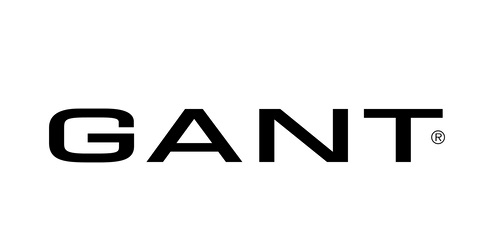Captain Branson? That’s right – Sir Richard Branson is getting into the cruise business.
Virgin Voyages sets sail in April 2020 offering a unique “Adult-by-Design” experience that allows Sailors to chart their personal course across the great ocean blue. Where tranquility meets curiosity. Restorative mornings or late nights under the stars — it’s all about balance your way. I’m not offended if you want to take a moment and book your sailing at www.virginvoyages.com before reading on!
You all set then? Welcome back!
The offer excites us too – but we also love the importance Virgin Voyages puts on experience to drive a strong and differentiated brand position. I’ve enjoyed a front row seat as the lead Nepa consultant helping Virgin Voyages to build the insights engine to ensure Virgin Voyages delivers on its brand and experience vision.
I recently connected with Christopher Stubbs, Senior Director of Sailor (Customer) Experience at Virgin Voyages – it’s a great chat about travel, branding, experience, targeting and more!
EE – Erik Enecker, MD Nepa US:
Can you start by telling us a little bit about how Virgin Voyages will transform the cruise industry?
CS – Christopher Stubbs, Virgin Voyages:
Virgin is known for its entrepreneurial spirit and challenging the status quo – as many have experienced with our sister brands such as Virgin Atlantic, Virgin Trains, Virgin Money and more, we’re continuing to raise the bar, proving that not even the sky’s the limit with Virgin Galactic. Today, our sights are set on the seven seas because there are so many people that would love to cruise but aren’t inspired by the by the current offer. As a result, we spoke to this evolving market and designed a different way to sail. We call it Virgin Voyages and we are on a mission to create an Epic Sea Change for All.
EE: Can you describe what is meant by “Epic Sea Change for All”?
CS: I’d love to. We want our people (our crew) to enjoy a successful, caring and generous place to work. We want the communities in the places we sail to thrive on a true entrepreneurial partnership. We have invested in technology and partnerships to secure a healthy future for our oceans and we want to build a strong, rewarding relationship with our First Mates (travel agency partners).
We want our Sailors’ holidays to be unforgettable, unexpected and unrivaled. We’ve designed each voyage to have a lasting impact on our Sailors, and in turn have curated an experience that will not simply be the best week of their year, it’ll be the best experience of their lives.
EE: With so much importance placed on experience and personalization, how do you know that you are communicating and delivering to Sailors?
CS: First, we are very clear about defining who our Sailor is because Virgin Voyages is decidedly not designed to appeal to everyone by being a mass market experience. We call them Eager Explorers, equal parts curious and craver that represent a mix of high-energy experiences, relaxation and rejuvenation. We welcome all adult Sailors and know that some will be drawn to Virgin Voyages based on age, cruise history, income and other dynamic characteristics. You see this reflected in some big business decisions, like the one we announced last year, when we told the market we are designing an experience for adults 18+, as we all know even Mum’s and Dad’s need a break from the little ones now and then.
Knowing that our Sailors are well traveled and expect authentic, bespoke experiences allows us to tailor everything that we say and do toward delivering them the voyage of a lifetime.
Research has been very valuable in this regard – from initially defining the segment of the market Virgin Voyages will appeal to diving deep into understanding expectations of specific “tribes” within that group. Clearly defined Sailor Segmentation needs is core to our strategy – and we’ll continue to engage our Sailors to learn more about how they find balance and their passion points enabling us to continually evolve and adjust our experience offer to meet their needs.
EE: Can you share a little bit about how you ensure, pardon the pun, sailing the brand and experience in the right direction?
CS: You’re right – brand and experience are two critical pieces to deliver the voyage we promise our Sailors. So, we are developing sophisticated ways to track both with the appropriate audience.
We have established a brand tracking program that allows us to see how the general public is perceiving the Virgin Voyages brand and analyzing that to be sure that our marketing and communication is resonating and delivering our core differentiation messages to “Eager Explorers.”
As the experience lead, I’m excited about the program we’re building for our Sailor Experience research with Nepa. Like everything a Sailor does with us, giving feedback is part of the experience – so we capture feedback in-moment, through our app, in a short and elegant fashion. We will also follow up with our Sailors’ at regular intervals after their voyage to be sure that we’ve delivered lasting satisfaction. Beyond being respectful in how we collect feedback, we honor or Sailors’ time by committing to act on feedback. Because feedback is integrated in our app, we can ensure that any service failures are immediately addressed and knowing what sailors love, and don’t love enables us to make better recommendations to them about the experiences we have on offer.
EE: Thanks! And how will Sailor Insights continue to support Virgin Voyages with future decisions?
CS: Ignore insights at your peril! We all know businesses that thrive have their fingers on the pulse, tracking the ever changing needs of customers, while using their people’s creativity to continually think about how we do things better. Insights are critical to business, a bit like a compass (or perhaps GPS nowadays) is critical to navigating a ship at sea.
We are not setting out to create a great experience just on Scarlet Lady’s Maiden Voyage, but are looking to start the journey of experience creation that will fuel how Sailors experience Virgin Voyages on all four of our ships in the future. This will require continuous innovation that is grounded in understanding what our Sailors need and expect from travel. We’ll continue to evolve our segmentation model and the understanding of the different types of Sailors’ that choose us.
By integrating our experience and operational data, we’re setting ourselves up to be able to prioritize the moments that matter most for creating lifelong memories for our Sailors. We can be very intentional about the experiences that we continue, improve, or create through an understanding of how our Sailors feel when aboard the Scarlet Lady.
EE: Okay, this one is for the reader who may be interested in branding and experience talk, but also thinking “sounds like a cruise for me” – what kind of experiences can one expect on Virgin Voyages?
CS: I hope they come and check it out – we’d love to have you on board!
Let me start with some industry norms that we’ve crushed: No waterslides (our ship is built for adults, not for kids), No buffets (besides being wasteful, our Sailors will enjoy the same quality food as they expect on land, all freshly cooked to order), No main dining halls (our sailors hate mass experiences), No Broadway shows (our future sailors say they have seen it already and have challenged us to create brand new experiences, not to replicate existing ones), No having to be back on board before sunset (experience destinations after dark!), No Nickel and Diming (we’ve ditched painful gratuities and other pesky charges for things like water and WiFI – after all they are basic human rights!), No forced formality (no stuffy formal dress codes – simply come as you are).
Okay, now to what we are. We like to call our style Rebellious Luxe – a predictably unpredictable experience where diverse experiences exist alongside each other. High energy events sit alongside relaxing moments and glamorous night clubs and restaurants sit next to lounge areas, relaxed eateries and spaces to chillax in.
When sailing with us you can expect a festival of choice at sea. There are too many places to eat and drink and too many other things on offer to see and do on one voyage. There are many ways to experience a voyage with us and each Sailor will make their own personal journey through our festival of choice. That’s part of the fun. Making plans with partners and friends, or simply going with the flow and making spontaneous decisions in the moment. Every Sailor will get off telling a different story as to how they sailed with us and leave knowing there is so much more to do, see and explore when they come back.
EE: Chris, thanks so much for sharing more about Virgin Voyages and the role of insights in meeting the high brand and experience standards you’ve set.
CS: My pleasure, Erik. And thanks to you and Nepa for supporting our voyage and helping uncover what our Sailors are expecting when they set sail with us in April 2020.
This article was written by:
Erik Enecker, MD Nepa US












